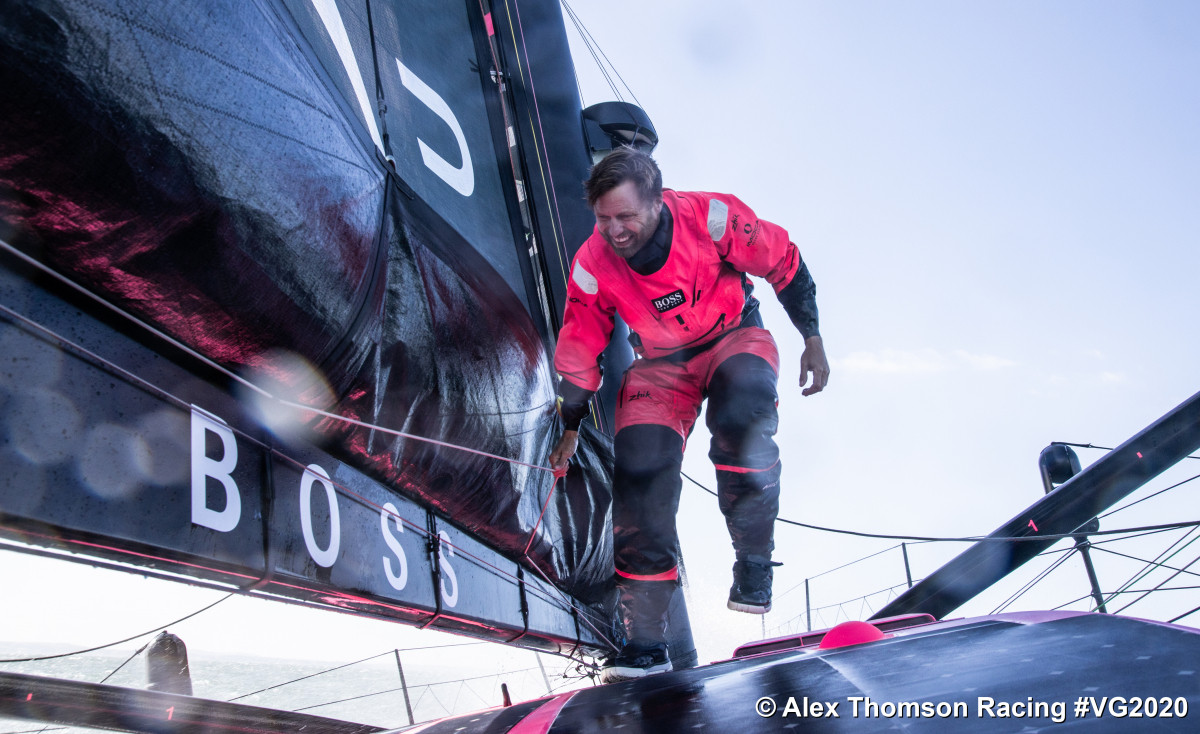HUGO BOSS takes the lead

11.12.20 - 5pm - After four days at sea, Britain’s Alex Thomson has assumed the lead of the Vendée Globe for the first time, as HUGO BOSS starts to accelerate downwind northeast of Sao Miguel in the Azores.
All his mainly French principal rivals have been watching Thomson’s performance in the race to date, having not had the chance to race against him in the build-up, and what is happening now will dispel any doubts they may have about the Englishman’s pace off the wind.
This afternoon the black-hulled foiler from Portsmouth on the English south coast was about 35 miles east and to leeward of his nearest two foiling rivals in fourth-placed Thomas Ruyant (LinkedOut) and Charlie Dalin (APIVIA) who was on Ruyant’s tail. Thomson was clocked at 15 knots in a northerly air stream on a heading that could take him just south of the Azorian island of Santa Maria.
The next best new generation foiler is Nicolas Troussel’s CORUM L’Épargne which led the race early on but is now nearly 19 miles astern of Thomson in sixth place.
Remarkably, the second and third places on the latest leaderboard are still occupied by old non-foiling IMOCAS – both of them designed by Bruce Farr and launched a year apart in 2006 and 2007 and both of them super-quick upwind.
The first of them is Jean le Cam’s Yes We Cam! Who was just four miles behind HUGO BOSS, the second Benjamin Dutreux’s OMIA-Water Family, another nine miles behind.
The race has been a fascinating challenge for skippers trying to cope with ever-changing weather and some very tough conditions. The next few days look equally challenging as the leaders begin to deal with Tropical Storm Theta which is currently centred around 600 miles west of the Madeiran capital Funchal.
There looks to be no way to pass the centre of this intense system to the east, so the skippers will be looking to benefit from strong downwind conditions on its west side.
Pascal Bidégorry, the hugely experienced offshore sailor and navigator who has been working with Dalin in the build-up, ran through the fastest option in this situation.
“What you have to do to get through a low pressure like this is go on port tack to the centre of the system and, if you do it perfectly, when you arrive at the centre you gybe onto starboard."
“I think the guys are going to go maximum close to the centre in downwind mode and gain up to four or five hours going through the system. They have to be careful about how the system is moving to be sure that they are not going to have light winds to the south of it. And afterwards, the first boat is going to catch the trade winds and is going to gain a little bit,”added Bidégorry.
The race remains beautifully poised even if it is lacking the participation at the head of affairs of one of its favourites, Jérémie Beyou who is still making his way northeast back towards Les Sables d’Olonne. Once he gets there, he and his team will assess what repair work needs to be done to Charal and whether he can set off again in time before the startline closes on November 18th.
Beyou was still about 150 miles northwest of La Coruna; southeast of him Fabrice Amedeo is currently making his way along the Galician coast on Newrest-Art & Fenêtres after re-starting following repairs to his rig.
Amedeo apart, the main fleet is now spread over 470 nautical miles of ocean with the backmarker, Sébastien Destremau on Merci, sailing a meandering course while he tries to sort out a long list of issues with his rig and boat following his encounter with the big frontal system late on Tuesday night.
Ed Gorman
Teams info
IMOCA becomes the first class in sailing to impose an impact reduction rule on boat construction
An impact reduction rule limiting harmful emissions in boat construction has been the major goal of the sustainability work that IMOCA has been conducting over the last four years and now it is being implemented.
•••ALL ACCESS #2 | CLARISSE CRÉMER
Let's dive into the thrilling preparations for the Vendée Globe. For the IMOCA skippers, the year 2024 holds paramount importance, marking the culmination of their efforts. Sailing around the world solo is their ultimate…
•••